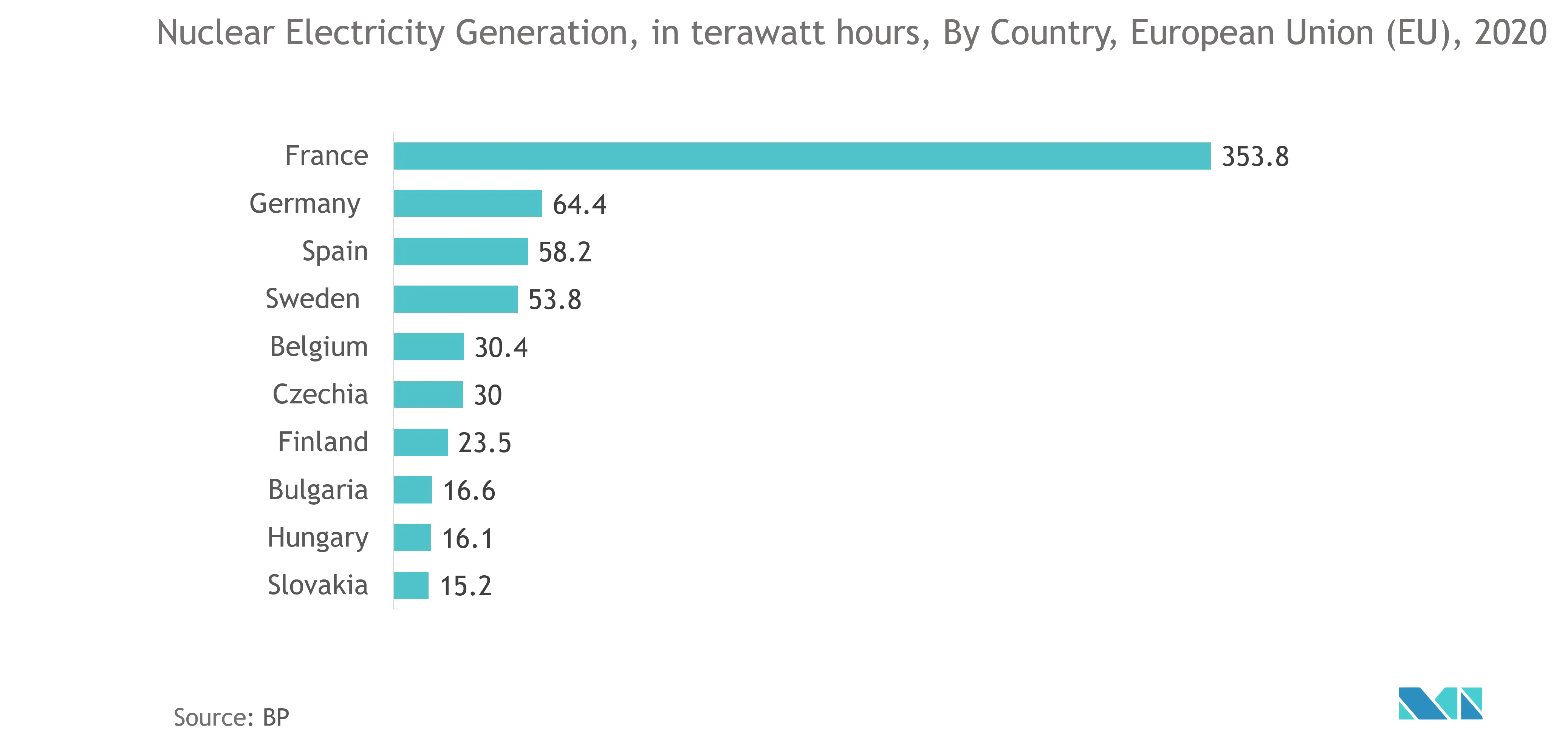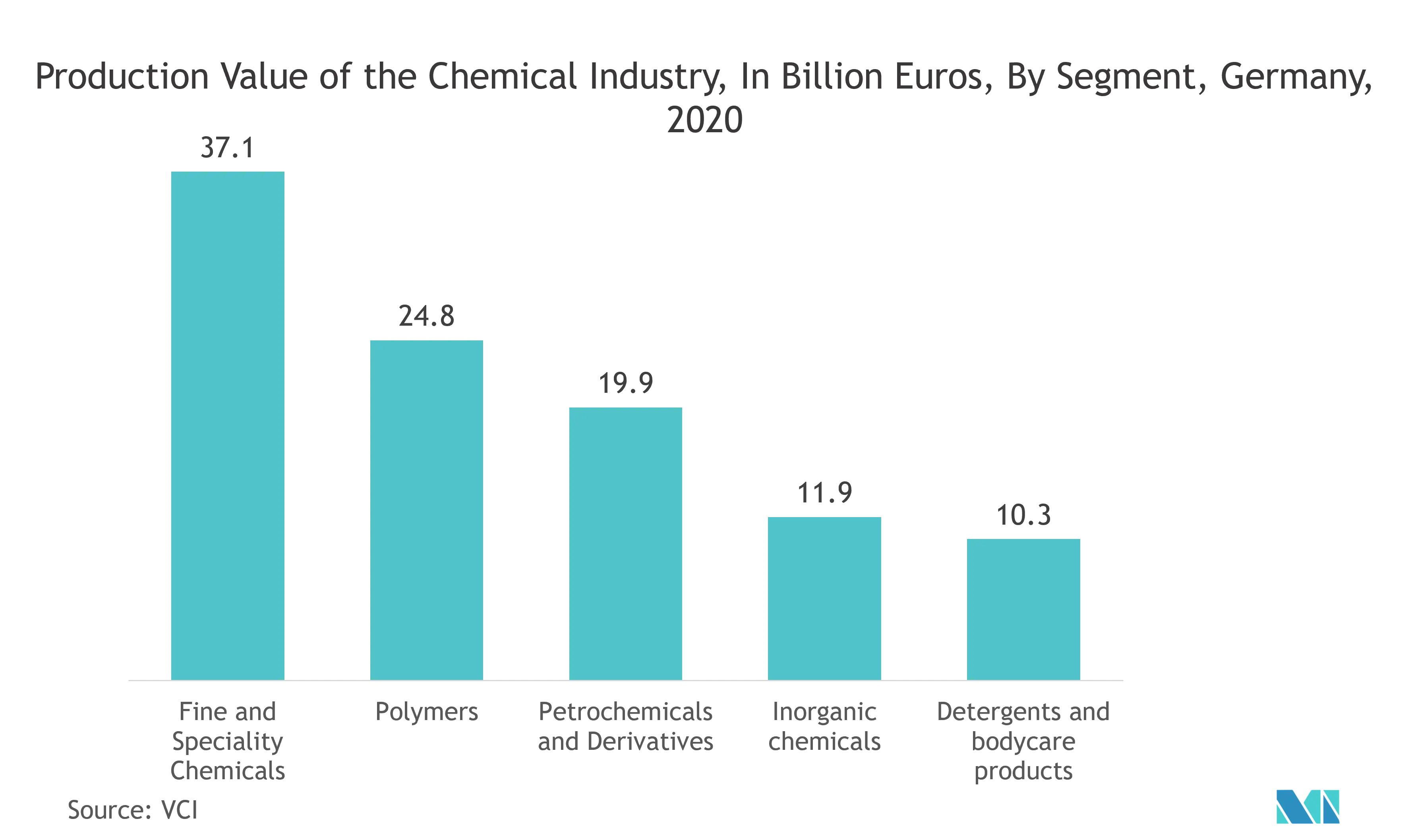Market Trends of Europe Safety Instrumented Systems Industry
This section covers the major market trends shaping the Europe Safety Instrumented Systems Market according to our research experts:
The Emergency Shutdown Systems are Expected to Hold a Major Market Share
- Emergency Shutdown System (ESD) is an automatic protection system that activates to shut down the plant or process stations if it enters a potentially dangerous state. ESD is part of the Safety Instrumented System (SIS) which is primarily used for safety purposes to protect either plants or people. These systems are designed to minimize the consequences of emergency situations, such as damage to equipment, injury, or loss of lives of the workers, by protecting against things like fire outbreaks, explosions, and leaks of hydrocarbons and other hazardous gases.
- For high-risk industries like Nuclear Power, Oil, and Gas, Chemical Industries, or other Environments with explosion risk, specialized, highly reliable Emergency Shutdown (ESD) System play a crucial role in cases the process goes beyond the control margins. To ensure reliability, the Emergency Shutdown systems usually have their own logic controller so that they can react to failures much faster than a normal PLC system which can be crucial in emergency cases.
- Owing to increasingly complex manufacturing and industrial applications, there has been a rise in the number of global catastrophic accidents. This, along with the supporting government regulations which promote the adoption of advanced technologies to ensure workers' safety, is supporting the growth of safety systems such as ESD.
- Emergency shutdown systems make use of several sensors and switches installed at functionally important locations to continuously monitor the working of the processes of an industrial system. These systems can usually be found on gas and steam turbines in power plants, oilfields, oil and gas processing plants, and boilers. To fulfill the growing demand for safety systems majority of vendors operating in the market are offering ESD systems in the standalone format as well as a part of SIS.
- For instance, System 800xA is ABB's main control system offering in which 800xA High Integrity constitutes the Safety Instrumented Systems (SIS) portion. The ESD safety system can be fully integrated with the System 800xA Basic Process Control System (BPCS), thereby providing a common operational, engineering, and information environment for BPCS and SIS.

Chemicals and Petrochemicals Segment is Expected to Drive the Market Growth
- A Safety Instrumented System is encompassed of sensors, logic solvers, and final control elements for the single purpose of taking the process to a safe state when predetermined conditions are violated. The growing benefits of safety instrumented systems over traditional safety systems are fueling the market demand. The chemicals & petrochemicals industries are identified as continuously developing industries, wherein the need for expansion and upgrading of aging safety problems and infrastructures is essential. Traditional safety systems are deployed through an electrical control system and are hardwired, which could perhaps lead to potential accidents affecting people, assets, and the environment.
- This will surge the demand for safety instrumented systems which deliver several advantages such as prolonged field life, reduction in unplanned downtime, reduction in annual maintenance cost, and elimination of unexpected repair expenses, and adhering to current codes and standards. Thus, the increasing advantages of safety instrumented systems over traditional safety systems will drive industry growth.
- In order to minimize various risks, process control systems are mounted to maintain a safe operation of the plant, supported by a robust alarm detection and reporting system, and operated by qualified, trained personnel. Regardless of the types of risks, the safety instrumentation systems, alarms, and operator intervention, provide the first layers of protection for the process.
- In the process design, care is taken to specify lines, equipment, and valves with the appropriate sizes, materials of construction, and appropriate accessories. The basic safety instrumentation system is installed with suitable instruments, controls, and monitoring logic to enable the plant to be operated within the safest ranges for pressure, temperature, and flow rate. Alarms are configured to allow the operators to respond to abnormal conditions and take corrective actions before a risk becomes an accident.
- In order to mitigate risks like the ones above, OSHA, The Occupational Safety and Health Administration, and several companies in the chemical industry, along with ISA and other professional groups, embraced the idea of defining risks, not as isolated processing line or tank risks, but as risks associated with processing functions as a whole. Standards ISA 84 and IEC 61508 were developed around the concept of functional safety. Later, these standards, ISA in the US and IEC in Europe, were harmonized in a single standard, ISA-84/IEC-61511. In March 2021, BASF’s Ludwigshafen, Germany, site have introduced a new production facility with the capacity to produce 90,000 mt/y of acetylene. BASF has opted for safety technology from HIMA, Brühl, Germany, which consists of hardware, software, and engineering to protect and secure safety-critical production processes in the complex project.


